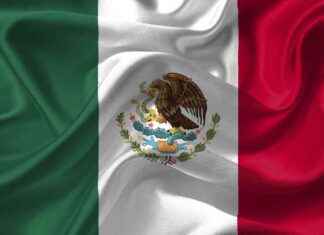Count Dracula, the real-life Count Bram Stoker was inspired to create his literary character, loved blood. It was taken as an aperitif with a good incision in the neck like someone who drinks an Aperol spritz with a slice of orange on the rim of the glass, or as a dessert like a glass of port. But in a good steak, whatever they ate in 15th century Romania, he couldn’t even see it. It’s not that he wanted it well done, like bad meat eaters. It turns out that he was vegan.
There are things you don’t expect to hear in life, and this is one of them. Vegan Dracula? But that is the definitive conclusion to which a series of chemical studies of the letters written by the character more than five centuries ago have led. In the molecules that have survived time, analyzed with the most modern techniques, there is no trace of animal proteins, only plant proteins. Professors Gleb Zilberstein and Vincenzo Cunsolo (from the University of Catania), co-authors of the study, are sure of this.
The bloodthirsty character was in real life Prince Vlad III the Impaler, boss of Wallachia in a conflictive time in the history of Europe (like so many) in which the Ottoman Empire and the Carolingian Roman Empire disputed power, and what today It’s Transylvania. When his father defected to the Turks, she sent him and his brother hostage to Istanbul, as a kind of guarantee that she would keep his promises. It did him no good, because he was executed, but Dracula swore revenge against the boyars and all those he considered responsible for his death, and impaled (hence his nickname) several tens of thousands, a cruel technique consisting of driving a stake splinter (sometimes with ants, spiders and other insects) on the victim’s body. The best thing that could happen was that the executioner miscalculated and put the stick into the heart, causing a quick outcome. But it was not frequent.
Maybe the famous vampire’s taste for bites on the neck was invented by Brad Stoker for his late 19th century novel from which cinema and theater have taken so much advantage, or maybe not. But what analyzes using the most sophisticated techniques of his saliva, sweat and fingerprints have revealed is that Vlad III, the flesh-and-blood Dracula, suffered, in addition to respiratory disorders, a strange disease called hemolacria, which consists of when one He cries, his tears falling mixed with blood.
Under what circumstances and why Vlad III cried is unclear. Perhaps for his father, but certainly not for the twenty thousand people whom he buried in a mass grave in the Forest of the Impaled near the city of Targoviste, and whose skeletons the Ottoman sultan Mehmed II found when he entered with his troops into Wallachia, and saw that the prince had given a good account of all his allies (or suspected allies) in the region. Life on the border between two empires is very complicated and bloodthirsty.
The reasons for Vlad III’s veganism are also a mystery, although it is questionable whether they were similar to those of today. Maybe meat didn’t agree with him, or the doctor had forbidden it, or he had cholesterol, but it is also possible that his love of vegetables was a matter of pure necessity. In the 15th century, current Transylvania was an extremely poor and cold region, with few natural resources, and hunting and fishing were conspicuous by their absence, even for the nobles who ruled. If you had access to some turnips, cabbages and potatoes, you could get a bite in your teeth. Perhaps hence the diet of the real-life Dracula, washed down with a few drinks of good harvest blood (the letters under analysis were sent by the prince in 1475 to the inhabitants of the town of Sibiu, informing them that he planned to settle there, but he did not ask for volunteers to let himself be bitten).
Vlad III put up more resistance than his father to the Ottoman invasion and retired to the Carpathian Mountains, trusting that King Matthias Corvinus of Hungary would help him regain his throne, a hope that was never realized. He eventually died on the battlefield, leaving a legacy of extreme cruelty, the legend of his fondness for blood and the inspiration for Bram Stoker’s novel. And on top of that, by force or by choice, he was a pioneer of the vegan thing.








